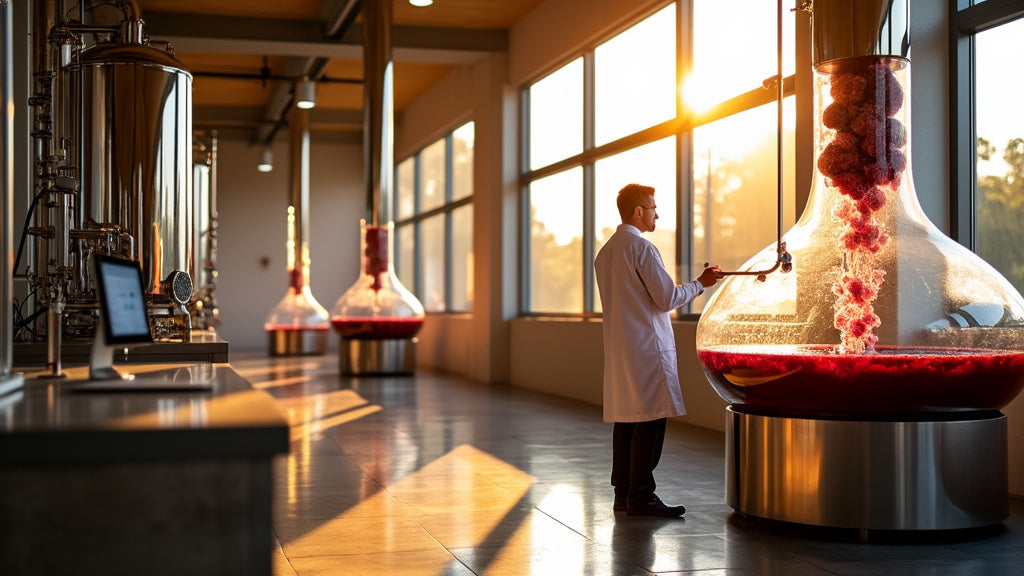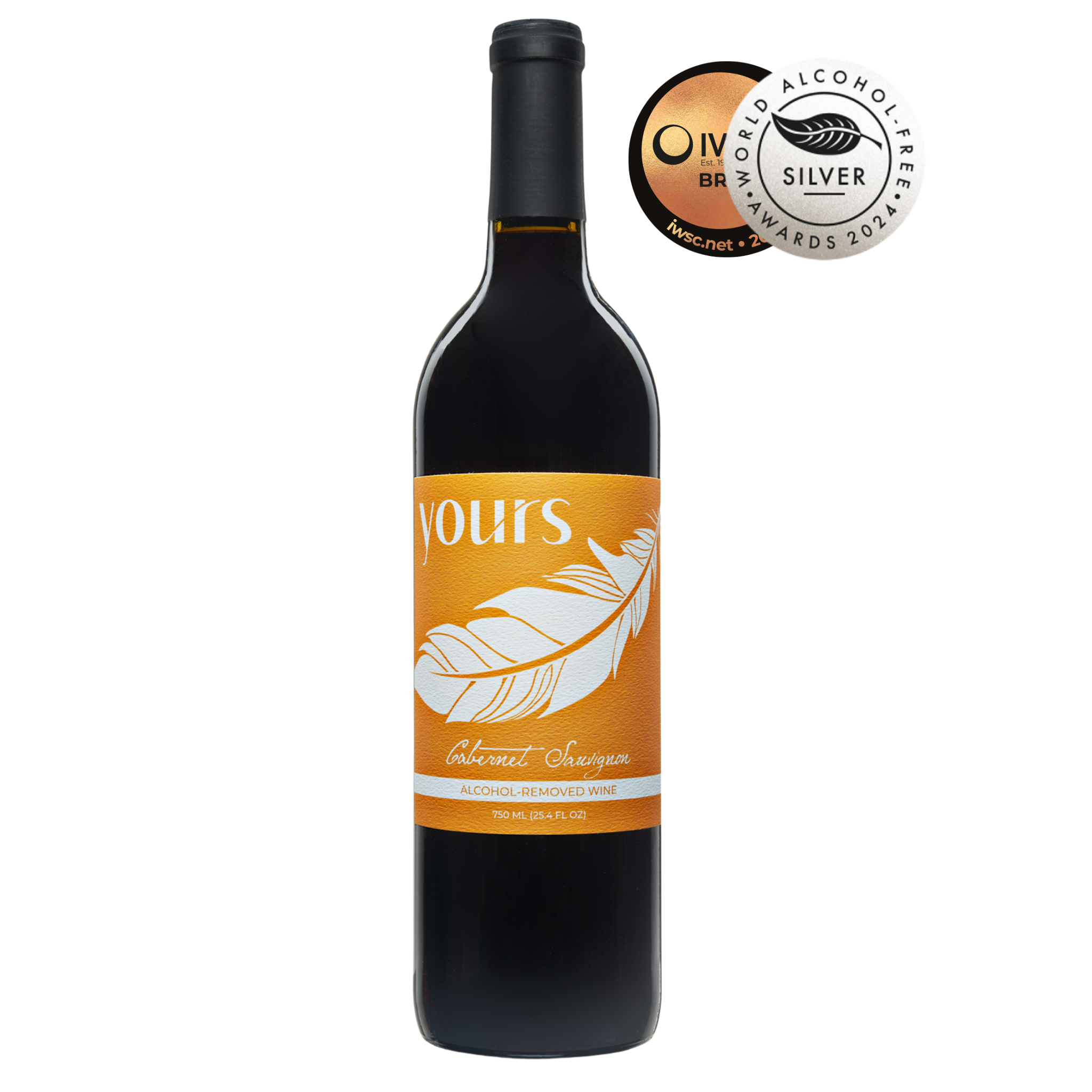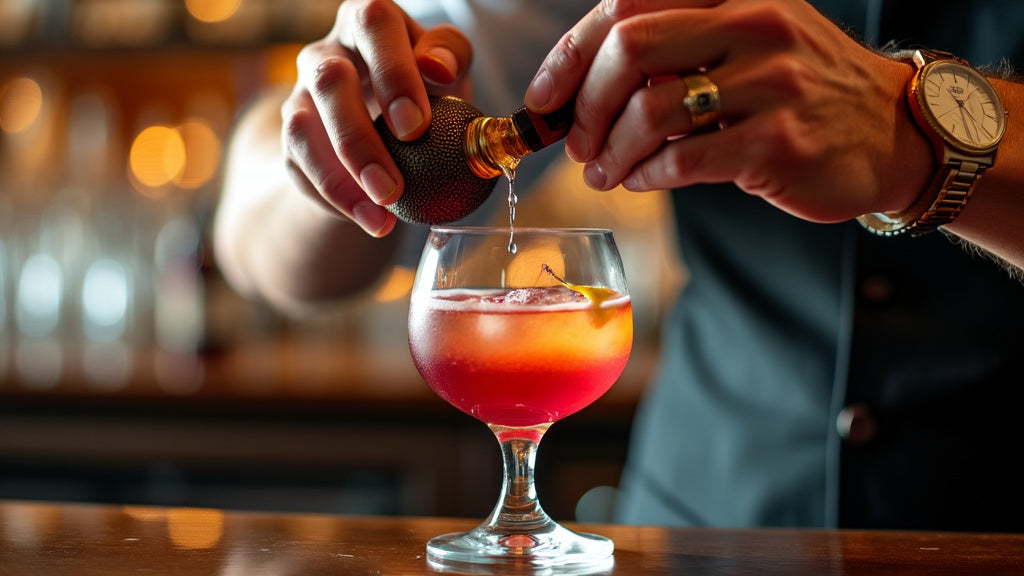California's Top 5 Innovative Wine Dealcoholization Technique

California winemakers are creating non-alcoholic wines that taste just like the real thing. You can enjoy your favorite Cabernet or Chardonnay without getting tipsy. Let's explore how they're making this wine magic happen!
Key Takeaways
- California leads in innovative non-alcoholic wine production techniques
- Dealcoholization methods preserve wine flavor while removing alcohol
- Non-alcoholic wines cater to health-conscious consumers and changing preferences
- Techniques like reverse osmosis and spinning cone columns are revolutionizing the industry
- YOURS Non-Alcoholic Wines exemplify the quality achievable in alcohol-free options
Why Take the Alcohol Out?
Climate change is making grapes sweeter, resulting in wines with higher alcohol content. Not everyone wants to feel tipsy after one glass. Many people are looking for healthier drink options that still taste great. That's where non-alcoholic wines come in.
Non-alcoholic wines are becoming popular, and California is leading the way. These wines are great for designated drivers, pregnant women, or anyone cutting back on alcohol.
The demand for non-alcoholic wines has increased recently. Health-conscious consumers, changing lifestyles, and interest in mindful drinking are driving this trend. California winemakers are investing in research to create high-quality, alcohol-free alternatives that taste great.
The Top 5 Dealcoholization Techniques
1. Reverse Osmosis: The Water Filter for Wine
Reverse osmosis is like a tiny water filter for wine. It uses a special membrane with small holes to separate alcohol from wine. It doesn't use heat, so the flavors stay intact.
The process applies pressure to the wine, pushing it through a semi-permeable membrane. This membrane lets water and alcohol molecules pass but blocks larger molecules like flavor compounds. The separated alcohol is removed, and the remaining wine concentrate is mixed back with the filtered water.
2. Spinning Cone Column: The Wine Merry-Go-Round
Imagine a tall column with spinning metal cones inside. As wine trickles down, the alcohol separates out. It's gentle on the wine and keeps the aromas.
The spinning cone column works under a vacuum, allowing for lower temperature processing. The wine forms a thin film on the spinning cones, increasing surface area and gently extracting volatile compounds, including alcohol.
3. Vacuum Distillation: The Space-Age Wine Maker
By lowering air pressure, winemakers can make alcohol evaporate at a much lower temperature. It's like boiling water on a mountain - it happens faster and at a lower temperature. This helps keep the wine's flavors.
Vacuum distillation removes alcohol from wine at temperatures as low as 75°F (24°C), much lower than alcohol's normal boiling point. This gentle process helps maintain the wine's flavor and prevents cooked flavors.
4. Nanofiltration: The Super-Duper Wine Strainer
Similar to reverse osmosis, but with even tinier filter holes. It can separate different types of molecules based on size. This method is great for keeping the wine's body and mouthfeel while removing alcohol.
Nanofiltration uses membranes with pore sizes between reverse osmosis and ultrafiltration. It can remove alcohol while keeping larger molecules that give wine its structure and mouthfeel.
5. Osmotic Distillation: The Sneaky Water Thief
This clever technique uses a special membrane that only lets alcohol and water pass through. A salty solution on the other side "tricks" the alcohol and water into leaving the wine.
Osmotic distillation uses a hydrophobic membrane to separate alcohol and water from wine. The wine is on one side, and a concentrated brine solution is on the other. The difference in concentration pulls alcohol and water vapor through the membrane, leaving behind the wine's flavor compounds.
Key Points: Dealcoholization Techniques
- Reverse Osmosis (RO): Uses semi-permeable membrane and pressure; efficient but may lose flavor compounds
- Spinning Cone Column (SCC): Thin film evaporation on rotating cones; gentle on wine, preserves flavor
- Vacuum Distillation (VD): Evaporation at low temperature/pressure; efficient but may lose flavor compounds
- Nanofiltration (NF): Similar to RO with larger pore size membrane; efficient but may lose flavor compounds
- Osmotic Distillation (OD): Uses hydrophobic membrane and concentration gradient; efficient but may lose flavor compounds
Taste the Difference: YOURS Non-Alcoholic Wines
YOURS Non-Alcoholic Wines show how delicious alcohol-free wines can be. They use these innovative techniques to create flavorful wines without alcohol.
Their California Red Blend has rich flavors like vanilla, blackberry, and a hint of chocolate - with only 10 calories per glass! Their Chardonnay is crisp and refreshing, with apple and citrus notes.
YOURS Non-Alcoholic Wines show that dealcoholization can create wines as complex and flavorful as alcoholic ones. The California Red Blend is full-bodied with balanced tannins, while the Chardonnay has the buttery, oaky notes Chardonnay fans love.
The Future of Non-Alcoholic Wine
As non-alcoholic wines gain popularity, California winemakers will keep improving their techniques. Maybe one day, telling the difference between regular and non-alcoholic wine will be impossible!
The future of non-alcoholic wine looks bright, with ongoing research focused on improving existing techniques and exploring new methods. Some promising areas include:
- Improved fermentation control to produce wines with naturally lower alcohol content
- Blending techniques that combine dealcoholized wines with grape juice for optimal flavor
- Advanced flavor recovery systems to capture and reintroduce volatile compounds lost during dealcoholization
- Using AI and machine learning to optimize dealcoholization processes for specific wine varietals
Whether you're cutting back on alcohol, trying to be healthier, or just curious, non-alcoholic wines are worth trying. California winemakers are making sure you don't have to sacrifice taste for a booze-free drink.
Next time you want wine without the wooziness, try one of these innovative non-alcoholic options. Your taste buds (and your head the next morning) will thank you!
Want to learn more about non-alcoholic wines? Check out this review of top non-alcoholic wines to find your new favorite. Cheers to innovation and great taste, minus the alcohol!






